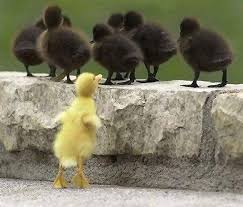Organizational Psychology – Socialization
Answers the Question
What is the learning and adjustment process that enables an individual to assume an organizational role that fits both organizational and individual needs?
How it Began
Uncertainty reduction theory
Berger and Calabrese (1975) drawing on the work of Heider presented a number of ‘universal truths’ describing the relationship and communication factors. Uncertainty reduction theory (URT) developed to describe the interrelationships between several factors: verbal communication, nonverbal expressiveness, information-seeking behaviour, intimacy, reciprocity, similarity, and liking.
The Need to Belong Theory
n Abraham Maslow’s hierarchy of needs, belongingness is part of one of his major needs that motivates human behaviour. The need for love and belonging lie at the center of the hierarchy as part of the social needs. While Maslow suggested that these needs were less important than the physiological and safety needs, he believed that the need for belonging helped people to experience companionship and acceptance through family, friends, and other relationships.
Social exchange theory
George Homans (1958) defined social exchange as the exchange of activity, tangible or intangible, and more or less rewarding or costly, between at least two persons. Homans’ work emphasized the behaviour of individuals in interaction with one another, centering his studies on dyadic exchange. Blau and Emerson further developed the exchange perspective within sociology. Lévi-Strauss is recognized for focusing on systems of generalized exchange, such as kinship systems and gift exchange.
Social identity theory
Tajfel (1979) proposed that people belonged to groups such as the groups social class, family, teams etc. providing an important source of pride and self-esteem. Groups give us a sense of social identity: a sense of belonging to the social world.
We can also increase our self-image through a process of social categorization by discriminating and holding prejudice views against the groups to which we don’t belong; thus dividing the world into “them” and “us.”
Key Terminology
Socialization – a learning process by which an individual develops as a social being and a member of a society or group.
Newcomers – someone who has recently arrived or recently joined a group
Personal Organisation Fit – the congruence of an individual’s beliefs and values with the culture, norms, and values of an organization
Work Adjustment – the relationship of the individual to his or her work environment
In Brief
Uncertainty reduction theory
People are motivated to communicate to reduce uncertainty which is unpleasant. Uncertainty reduction follows a pattern of developmental stages (entry, personal, exit). At Entry stage an individual will obtain information about another’s sex, age, economic or social status, and other demographic information. Interaction at this stage is controlled by communication rules and norms. The personal stage begins when attitudes, beliefs, values, and more personal data are shared, leading to less constraint and more free communication. The exit phase leads to decisions on future interaction plans negotiating ways to allow the relationship to grow and continue.
The Need to Belong
In social psychology, the need to belong is an intrinsic motivation to be in relationship with others and be accepted socially. Our need to belong is what drives us to seek out stable, long lasting relationships with other people. It motivates us to participate in social activities and by belonging to a group, we feel as if we are a part of something bigger and more important than ourselves.
Social Exchange theory
Social exchange theory proposes that social behaviour is the result of an exchange process. The purpose of this exchange is to maximize benefits and minimize costs. People weigh the potential benefits and risks of social relationships and if we judge that the risks outweigh the rewards the relationship will be terminated.
Social exchange theory suggests that our perception of a relationships worth is essentially taking the benefits and deducting the costs. Positive relationships are those in which the benefits outweigh the costs, while negative relationships occur when the costs are greater than the benefits.
Social Identity Theory
Social identity is a person’s sense of who they are based on their group membership. We see the group to which we belong (the in-group) as being different from the others (the out-group), and members of the same group as being more similar than they are. Social categorization is one explanation for prejudice. The central hypothesis of social identity theory is that group members of an in-group will seek to find negative aspects of an out-group, thus enhancing their self-image.
Henri Tajfel proposed that stereotyping (i.e. putting people into groups and categories) is based on a normal cognitive process: the tendency to group things together. In doing so we tend to exaggerate differences and similarities.
What does this mean for Organization Development
The pervasive nature of organizational socialization can have a major impact on organizational behaviour, citizenship and career development.
Organizational socialization is concerned with the learning content and process by which an individual adjusts to a specific role in an organizations. Socialization is not only an important issue for organizational newcomers, but it is important for established organizational members as well. The need for resocialization among organizational members may be required as people change jobs or teams. These changes may be the result of promotion, transfer or reassignment or may be more subtle changes such as job title or design.
Three primary mechanisms have been proposed as Socialization tactics
- influencing turnover antecedents: job satisfaction, organizational commitment, and meeting expectations
- influencing adjustment to new jobs and environments: learning and development opportunities, task mastery, role clarity, and workgroup integration
- influencing perceptions of person-organization fit and values
Changing organizational structure, positions, personnel, work procedures, organizational objectives or values may trigger the need for new learning and role adjustment if career effectiveness is to be maintained.

